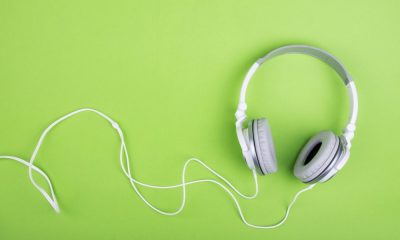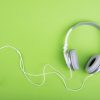LATEST FINANCIAL NEWS
Don’t pay student loans with your stimulus check. Cash it toward credit card debt: Here’s why.
Stimulus update: Another check and ‘plus-up’ payments coming soonIf your income dropped this past year, you may be eligible for another round of stimulus checks after you file your 2020 taxes.Staff video, USA TODAYMany families could be looking at more money than they’ve ever seen at once when you add stimulus cash of up to $1,400 a person on top of a healthy income tax refund.So — if you haven’t already spent it — what’s a solid plan of attack to save it?”If someone has credit card debt, I think the best use of any money would be to pay it off,” according to George Papadopoulos, a certified public accountant and financial adviser in Novi.The average rate that consumers are paying on credit card debt is 16.15%, according to CreditCards.com.The rate on your cards could be much higher if you have bad credit or built up debt on a credit card issued by some retailers. The average rate for those with bad credit is 25.3%, according to CreditCards.com.”Credit card debt must go,” Papadopoulos said. “The sooner the better. It is impossible to build wealth when you carry credit card debt paying egregious interest rates on it.” Families with credit card debt had around $6,300 in such debt on average, according to the 2019 Federal Reserve Survey of Consumer Finances. More than 45% of families reported a credit card balance after their last payment. More stimulus checks on the way: IRS distributes another 1.1M, including ‘plus-up’ paymentsMore: Are you eligible for a ‘plus up’ stimulus check?A stimulus payout — and a tax refund — could make an enormous difference in dealing with one’s bills. A family of four, for example, could be looking at up to $5,600 in stimulus cash as part of the latest round of payments.Once you pay off credit card debt, many financial advisers suggest that consumers of all ages take a hard look at emergency cash on hand. Having enough money set aside can shore up your mental well being — and cover many bills — if you lose a job or face a stock market meltdown. “It allows people to let the long term investment portfolio do its thing — which is fluctuate, sometimes wildly — without having to sell at inopportune times to survive,” Papadopoulos said. “It is very important to have a fat emergency fund account,” he said. In general, experts say people should consider having three to six months in savings to cover their everyday bills in case of a job loss or other emergency. Biden stimulus package details of $1.8 trillion American Families PlanBiden stimulus package details revealed: American Families Plan includes free childcare, community college, and possible hike of capital gains tax.Staff Video, USA TODAYThe temptation to spend instead of save in 2021 is clearly out there. The latest round of stimulus cash has many turning on the “spending faucet,” according to Anand Talwar, deposits and consumer strategy executive for Ally Bank.By contrast, the first round of stimulus checks in the spring of 2020 prompted one of the most extraordinary periods of personal savings in recent history.”People were certainly hunkering down,” Talwar said. Now, he noted that data from Ally’s customers indicated a 43% spending surge among customers who received the stimulus checks in March. Much of the big spending involved airline travel and clothing. People were twice as likely to spend that stimulus money than to spend a tax refund, based on Ally’s data. As more people are vaccinated and see a light at the end of the tunnel, more are willing to book a trip or spend on work clothes, as some expect to head back into the office soon. Increasingly, Talwar said, many consumers are more confident about the future than they were a year ago when the pandemic began. The third round of stimulus by its nature was more likely to be spent, Talwar said, because it was a bit more targeted by income thresholds than the first two programs to reach those who really needed the money. The full $1,400 goes to single people earning up to $75,000. But it phases out quickly after that and is completely phased out for those earning more than $80,000. A full payment of $2,800 goes to a married couple filing a joint federal income tax return earning up to $150,000. The phaseout begins after that and ends at $160,000. Families with children also received more money in the third program. Right now, Talwar said, people aren’t giving up long term savings goals. He’s hopeful that many people maintain healthy savings habits and avoid “revenge spending” — where people make up for lost time in 2020 by spending lavishly or carelessly, take your pick, in 2021. Diane Swonk, chief economist for Grant Thornton, noted in an April report that the saving rate hit 27.6% — more than $6 trillion — which is below the peak of 33.7% reached in April 2020. “Most of the stimulus checks were saved or used to pay off bills that accumulated late last year,” she wrote. She added, though, that more consumers are likely to tap into that money as “more vaccinations ramp up and warmer temperatures reopen outdoor venues.”She wrote: “The key to getting the bang for the buck on stimulus checks is herd immunity, which would allow a fuller reopening of the economy.”Here’s what to consider if you want to save some money, instead of spending it all: What to do in your 20s or 30s? While it might be tempting to put some extra stimmy cash on a hot stock, many financial planners warn this isn’t a sure bet.”I would definitely not advise trading individual stocks using apps like Robinhood,” Papadopoulos said. “If they decide to go for it, they must go in with the mindset that it is all gambling (which it definitely is) and they must be OK to lose it all. If they are indeed OK with that, go ahead and good luck, they will need it.”Instead, experts say that younger consumers should tackle their rainy day fund — and pay down some debt.Savers, Papadopoulos said, should consider looking for higher rates offered by online savings banks, which are “many times over what the regular banks will pay.” Ally Bank, for example, has no monthly maintenance fees and no minimum deposit requirement. The annual percentage yield on savings is 0.5% for the digital account.Rates for regular savings accounts at some major banks are just 0.01% in this low-rate environment. Some credit unions pay 0.1% on regular savings. Some banks pay higher rates, such as 0.15%, if you have more than $10,000 in savings. Many millennials might consider setting aside extra cash toward a specific goal, such as a down payment on a home. Talwar said some people stay better focused on their savings goals if they visualize why they’re saving that money, such as a honeymoon or a kitchen renovation. You also want to look at what big bills you have hanging over your head already — and see how some extra cash can give you some breathing room.”If you’re mired in debt, stimulus money can really feel like a lifeline,” said Melissa Joy, president of Pearl Planning, a wealth adviser in Dexter. “First, make sure that you have some cash on hand for when things go wrong,” she said.But take time to understand what debt makes sense to pay down now — and what doesn’t. Do you have some credit card rates that are relatively low? Pay off the debt that carries the highest interest rate first. Should you try to pay down student loans with stimulus cash?Joy said you also want to evaluate whether any of your student loan debt can be forgiven — think public service loan forgiveness — and consider what loans might never be forgiven, including private student loans.Unlike federal student loans, private student loans don’t qualify for federal student loan forgiveness programs. It might not be the best idea right now for many student loan borrowers. Remember that we could see some broad student loan forgiveness later this year, said Mark Kantrowitz, author of “How to Appeal for More College Financial Aid.” President Joe Biden has said that he supports $10,000 in student loan forgiveness.But others — including U.S. Sen. Elizabeth Warren, D-Massachusetts — are calling for $50,000 in student loan forgiveness.”Given that the amount of forgiveness and eligibility criteria are unknown at this point in time, borrowers should not take any actions that might make them ineligible for loan forgiveness, such as paying off their debt or refinancing federal loans into private student loans,” Kantrowitz said. In general, if someone already is looking at more than $50,000 in student loan debt, he said, there’s unlikely to be any harm in making extra payments on their loans, even when it’s not required. As part of financial relief offered during the COVID-19 emergency, there is a pause on repayment, a temporary 0% student loan interest rate, and a pause on collections for borrowers with federal student loans held by the Department of Education through Sept. 30. Any borrower who expects to receive loan forgiveness in the future should not make extra payments when they are not required to do so, Kantrowitz warned, as that just reduces the amount of forgiveness they will eventually receive. “Borrowers who still have jobs and are able to continue making payments on their student loans should bank the money or pay down higher-interest debt first. It’s a good opportunity to build or bulk up your emergency fund,” Kantrowitz said. After the details of student loan forgiveness are announced, he said, borrowers can use the banked money to pay down student loan debt as appropriate. Pay down the loans with the highest interest rates first. What about your 30s or 40s? “When you’re in your 40s with kids, you are likely feeling the tug-of-war between competing money priorities,” Joy said.”You need a bigger emergency reserve as expenses can pop up anywhere.”After taking care of an emergency fund, she said, try to bulk up savings in retirement plans or IRA plans if they are options.Or you may want to add more money to a 529 plan for college savings. “Your 40s can be game-changing accumulation years,” she said. “While it can feel comfortable to pay off a mortgage,” Joy said, “I typically encourage people to first look at other debt, savings and investment. Interest rates are so low now that if you have a reasonable interest rate (on a mortgage) other financial decisions may make sense to come first.” Now could be a good time to boost your contributions into your 401(k) plan or set up a Roth IRA. Talk to your 401(k) provider about bumping up your savings rate out of your regular paychecks. 3 tips for empty nesters who want to replenish their savingsIf you’re an empty nester, make sure you’ve done these 3 tasks to turbocharge your 401(k).USA TODAYLook into opening a Roth IRA or contributing more money into one. A key point: The money you’ve saved into the Roth — your own contributions — can be taken out at any time without paying a penalty or taxes.You’d often face a 10% penalty if you withdraw Roth IRA earnings before age 59½. So if you’ve set aside $5,000 and have $1,000 in earnings, you’d pay a $100 penalty or 10% on the $1,000 in earnings if you withdrew the entire $6,000. A Roth IRA provides tax-free growth and tax-free withdrawals in retirement. Once you’ve owned your account for five years and if you’re age 59½ or older, you can withdraw any money you’ve earned when you want to and you won’t owe any federal taxes or face penalties.And there are some specific situations where you can avoid the penalty, too, such as if you’re permanently disabled or you use the money in the Roth for qualified education expenses, such as college tuition for a child. For the 2020 and 2021 tax years, you could contribute up to $6,000 a year, or up to $7,000 if you are 50 or older. Contributions for 2020 must be made by May 17. You are allowed until April 15, 2022, to make contributions to your 2021 Roth IRA. What if you’re in your 50s or 60s or already retired?”My goal with clients is to have them debt free before retirement,” Papadopoulos said.”In my career, no client has ever complained about paying off their mortgage early.” Or you might want to set aside cash for future medical bills. Joy said if you are pre-Medicare age and participating in a high deductible health plan, she suggests contributing to a health savings account.Consider putting extra money into a Health Savings Account, which lets you set aside money on a pre-tax basis to pay for qualified medical expenses. “Do you have access to a health savings account? That’s another great savings and investing vehicle which can get you a tax break as well as access to tax-free funds when earmarked for health care,” Joy said.How you can save a million bucks for retirementUSA TODAY’s retirement columnist Rodney Brooks talks to Jeanne Thompson, a vice president at Fidelity Investments about what it takes to save a million dollars for retirement.(MONEY, USA TODAY)”Medical expenses are high in retirement and HSA funds can really help out,” she said.If you have adequate cash on hand to pay current medical bills, she said, a health savings account can be a great investment for future medical needs.”Withdrawals from your HSA are tax-free as long as they go for medical expenses,” she said.”So your Medicare premiums, prescription payments and a whole host of medical expenses in retirement can be tax-advantaged when taken from your HSA.” But once you’re already using Medicare, she said, you cannot put aside more money into an HSA. Then, she said, savers can consider taxable investments or bulking up emergency reserves to pre-fund early retirement expenses for one or two years so that you limit the need to withdraw money — and drive up taxes — out of a regular 401(k) or taxable retirement account. Contact Susan Tompor via stompor@freepress.com. Follow her on Twitter @tompor.
Source link









